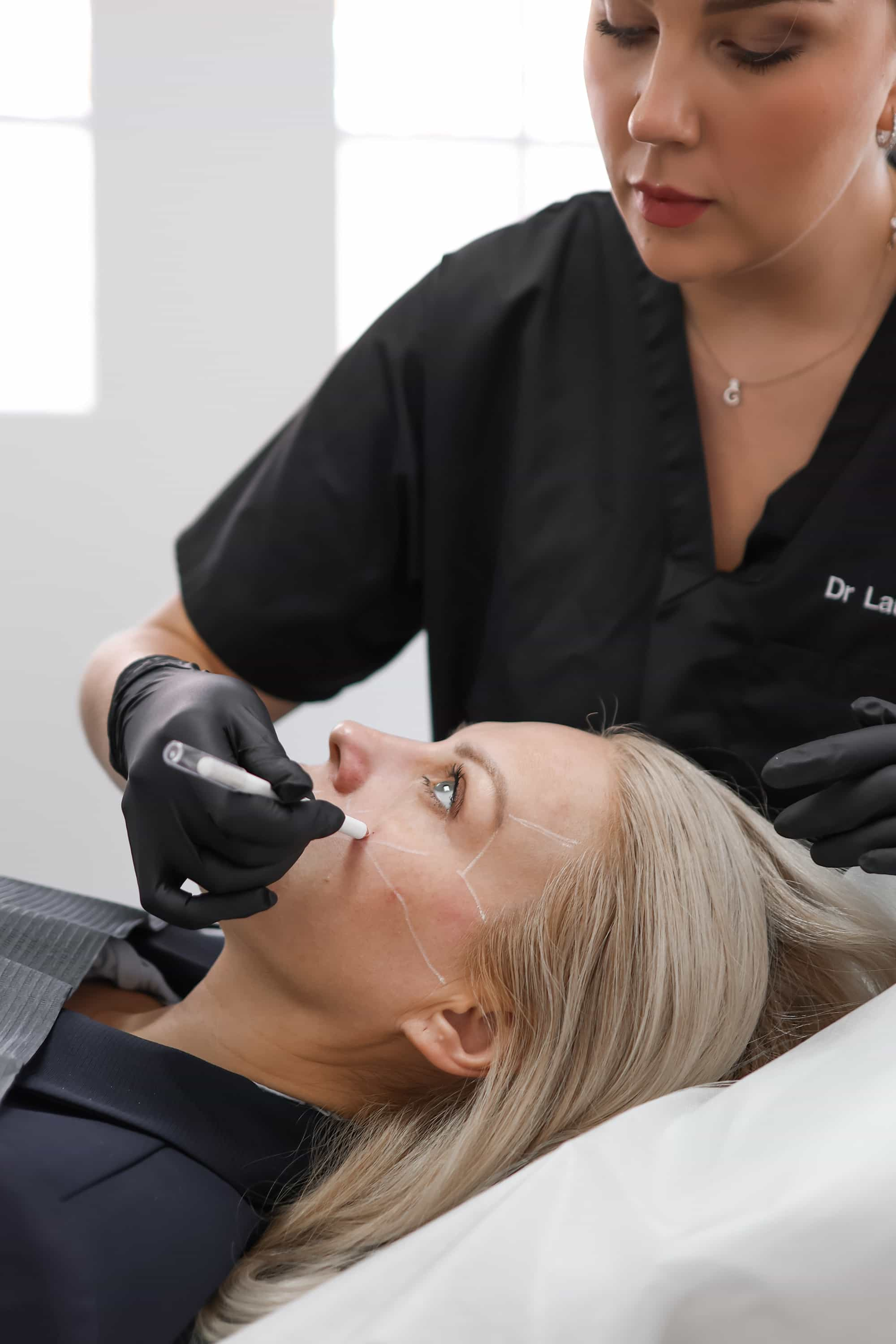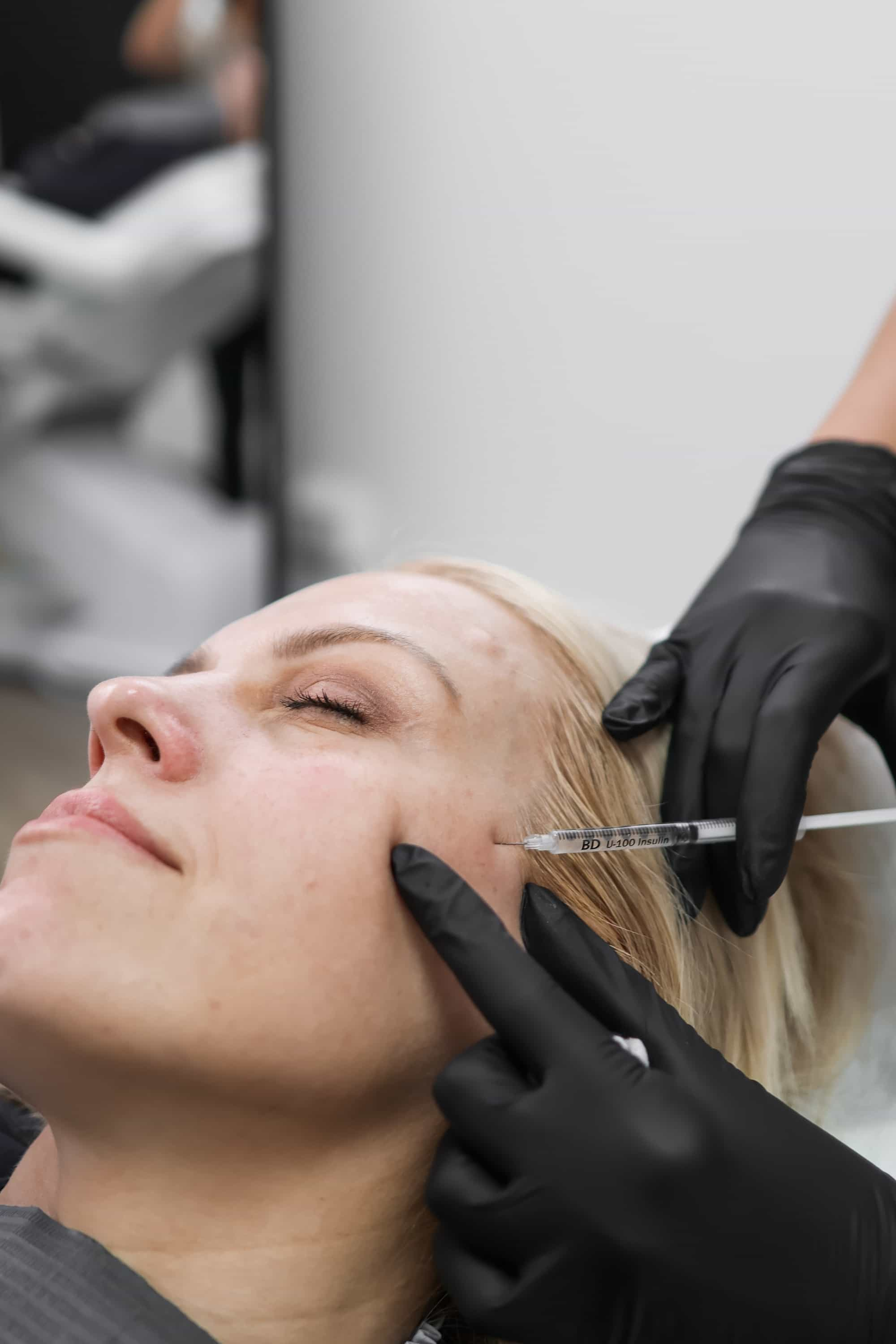Sculptra vs. Dermal Fillers: Understanding the Differences
When considering anti-aging treatments, two popular options often come up: Sculptra and dermal fillers. Both can address facial volume loss and wrinkles, but they work in distinct ways and offer different outcomes. Understanding these differences is crucial for making an informed decision about the best treatment approach for your individual needs.
Injection Process
Sculptra and dermal fillers are both popular injectables used to combat signs of aging, but they differ significantly in their composition, application, and long-term effects. Dermal fillers, typically composed of hyaluronic acid, instantly plump up wrinkles and restore volume by directly filling in areas where tissue has diminished.
Sculptra, on the other hand, is made of poly-L-lactic acid (PLLA), a biocompatible substance that stimulates collagen production. Rather than immediate volume restoration, Sculptra gradually builds collagen over several treatments, resulting in a more natural and long-lasting lift.
The injection process for dermal fillers is relatively quick and straightforward. A local anesthetic is applied to the treatment area, and the filler is injected using a fine needle directly into the target wrinkles or folds. The results are immediate and can last anywhere from six months to two years depending on the type of filler used.
Sculptra injections also involve a local anesthetic, but multiple treatments are required to achieve optimal results. During each session, Sculptra is injected beneath the skin, triggering collagen production over time. The gradual improvement takes place over several weeks to months following treatment.
Treatment Results and Longevity
Dermal fillers offer immediate volume restoration and can smooth out wrinkles and folds for a noticeable difference right away. They’re a great option for addressing moderate to severe wrinkles and restoring lost volume in areas like the lips, cheeks, and under the eyes.
Sculptra provides a more gradual approach to volumization and facial rejuvenation. It stimulates your body’s own collagen production, leading to a subtle yet noticeable lift over several weeks and months after treatment. Sculptra is ideal for those seeking long-lasting results and a more natural-looking enhancement.
When deciding between Sculptra and dermal fillers, factors like desired outcome, budget, and time commitment should be considered. Dermal fillers provide instant gratification and are suitable for addressing specific areas of concern. Sculptra’s gradual approach offers a longer-lasting solution that progressively enhances facial contours and diminishes the appearance of fine lines and wrinkles.
Target Areas
When considering anti-aging treatments, two popular options often come up: Sculptra and dermal fillers. Both can address facial volume loss and wrinkles, but they work in distinct ways and offer different outcomes. Understanding these differences is crucial for making an informed decision about the best treatment approach for your individual needs.
Sculptra and dermal fillers are both popular injectables used to combat signs of aging, but they differ significantly in their composition, application, and long-term effects. Dermal fillers, typically composed of hyaluronic acid, instantly plump up wrinkles and restore volume by directly filling in areas where tissue has diminished.
Sculptra, on the other hand, is made of poly-L-lactic acid (PLLA), a biocompatible substance that stimulates collagen production. Rather than immediate volume restoration, Sculptra gradually builds collagen over several treatments, resulting in a more natural and long-lasting lift.
The injection process for dermal fillers is relatively quick and straightforward. A local anesthetic is applied to the treatment area, and the filler is injected using a fine needle directly into the target wrinkles or folds. The results are immediate and can last anywhere from six months to two years depending on the type of filler used.
Sculptra injections also involve a local anesthetic, but multiple treatments are required to achieve optimal results. During each session, Sculptra is injected beneath the skin, triggering collagen production over time. The gradual improvement takes place over several weeks to months following treatment.
Dermal fillers offer immediate volume restoration and can smooth out wrinkles and folds for a noticeable difference right away. They’re a great option for addressing moderate to severe wrinkles and restoring lost volume in areas like the lips, cheeks, and under the eyes.

Sculptra provides a more gradual approach to volumization and facial rejuvenation. It stimulates your body’s own collagen production, leading to a subtle yet noticeable lift over several weeks and months after treatment. Sculptra is ideal for those seeking long-lasting results and a more natural-looking enhancement.
When deciding between Sculptra and dermal fillers, factors like desired outcome, budget, and time commitment should be considered. Dermal fillers provide instant gratification and are suitable for addressing specific areas of concern. Sculptra’s gradual approach offers a longer-lasting solution that progressively enhances facial contours and diminishes the appearance of fine lines and wrinkles.
Suitability for Different Skin Types and Concerns
Sculptra and dermal fillers are both popular injectable treatments used to address signs of aging, but they work in distinct ways. Dermal fillers, typically composed of hyaluronic acid, instantly plump up wrinkles and restore volume by directly filling in areas where tissue has diminished. This provides immediate results that can last anywhere from six months to two years depending on the type of filler used.
Sculptra, on the other hand, is made of poly-L-lactic acid (PLLA), a biocompatible substance that stimulates collagen production. It doesn’t instantly add volume; instead, it gradually builds collagen over several treatments, resulting in a more natural and long-lasting lift. Multiple sessions are required, with results appearing over several weeks to months following treatment.
Dermal fillers are a great option for those seeking immediate gratification and want to address specific areas of concern like moderate to severe wrinkles or volume loss in the lips, cheeks, or under the eyes.
Sculptra is ideal for individuals looking for a more gradual approach to volumization and facial rejuvenation. It stimulates the body’s own collagen production, leading to a subtle yet noticeable lift over time. Sculptra is suitable for those seeking long-lasting results and a more natural-looking enhancement.
Ultimately, the best choice between Sculptra and dermal fillers depends on individual needs, desired outcomes, budget, and time commitment.
Cost and Financing Options
Sculptra and dermal fillers are both popular injectable treatments used to address signs of aging, but they work in distinct ways. Dermal fillers, typically composed of hyaluronic acid, instantly plump up wrinkles and restore volume by directly filling in areas where tissue has diminished. This provides immediate results that can last anywhere from six months to two years depending on the type of filler used.
Sculptra, on the other hand, is made of poly-L-lactic acid (PLLA), a biocompatible substance that stimulates collagen production. It doesn’t instantly add volume; instead, it gradually builds collagen over several treatments, resulting in a more natural and long-lasting lift. Multiple sessions are required, with results appearing over several weeks to months following treatment.
Dermal fillers are a great option for those seeking immediate gratification and want to address specific areas of concern like moderate to severe wrinkles or volume loss in the lips, cheeks, or under the eyes.
Sculptra is ideal for individuals looking for a more gradual approach to volumization and facial rejuvenation. It stimulates the body’s own collagen production, leading to a subtle yet noticeable lift over time. Sculptra is suitable for those seeking long-lasting results and a more natural-looking enhancement.
When it comes to cost, dermal fillers generally have a lower initial price point than Sculptra, as fewer treatments are needed. However, since Sculptra’s effects are longer lasting, you may end up spending less in the long run.
Financing options for both treatments are becoming increasingly common. Many clinics offer payment plans or financing through third-party lenders to help patients manage the cost of their treatment.
Downtime and Recovery
Sculptra and dermal fillers are both popular injectables used to combat signs of aging, but they differ significantly in their composition, application, and long-term effects. Dermal fillers, typically composed of hyaluronic acid, instantly plump up wrinkles and restore volume by directly filling in areas where tissue has diminished.
Sculptra, on the other hand, is made of poly-L-lactic acid (PLLA), a biocompatible substance that stimulates collagen production. Rather than immediate volume restoration, Sculptra gradually builds collagen over several treatments, resulting in a more natural and long-lasting lift.

The injection process for dermal fillers is relatively quick and straightforward. A local anesthetic is applied to the treatment area, and the filler is injected using a fine needle directly into the target wrinkles or folds. The results are immediate and can last anywhere from six months to two years depending on the type of filler used.
Sculptra injections also involve a local anesthetic, but multiple treatments are required to achieve optimal results. During each session, Sculptra is injected beneath the skin, triggering collagen production over time. The gradual improvement takes place over several weeks to months following treatment.
Dermal fillers offer immediate volume restoration and can smooth out wrinkles and folds for a noticeable difference right away. They’re a great option for addressing moderate to severe wrinkles and restoring lost volume in areas like the lips, cheeks, and under the eyes.
Sculptra provides a more gradual approach to volumization and facial rejuvenation. It stimulates your body’s own collagen production, leading to a subtle yet noticeable lift over several weeks and months after treatment. Sculptra is ideal for those seeking long-lasting results and a more natural-looking enhancement.
When deciding between Sculptra and dermal fillers, factors like desired outcome, budget, and time commitment should be considered. Dermal fillers provide instant gratification and are suitable for addressing specific areas of concern. Sculptra’s gradual approach offers a longer-lasting solution that progressively enhances facial contours and diminishes the appearance of fine lines and wrinkles.
Side Effects and Risks
Sculptra and dermal fillers are both popular injectable treatments used to address signs of aging, but they work in distinct ways. Dermal fillers, typically composed of hyaluronic acid, instantly plump up wrinkles and restore volume by directly filling in areas where tissue has diminished. This provides immediate results that can last anywhere from six months to two years depending on the type of filler used.
Sculptra, on the other hand, is made of poly-L-lactic acid (PLLA), a biocompatible substance that stimulates collagen production. It doesn’t instantly add volume; instead, it gradually builds collagen over several treatments, resulting in a more natural and long-lasting lift. Multiple sessions are required, with results appearing over several weeks to months following treatment.
Dermal fillers are a great option for those seeking immediate gratification and want to address specific areas of concern like moderate to severe wrinkles or volume loss in the lips, cheeks, or under the eyes.
Sculptra is ideal for individuals looking for a more gradual approach to volumization and facial rejuvenation. It stimulates the body’s own collagen production, leading to a subtle yet noticeable lift over time. Sculptra is suitable for those seeking long-lasting results and a more natural-looking enhancement.
When it comes to cost, dermal fillers generally have a lower initial price point than Sculptra, as fewer treatments are needed. However, since Sculptra’s effects are longer lasting, you may end up spending less in the long run.
Financing options for both treatments are becoming increasingly common. Many clinics offer payment plans or financing through third-party lenders to help patients manage the cost of their treatment.
Choosing the Right Treatment for You
When considering anti-aging treatments, two popular options often come up: Sculptra and dermal fillers. Both can address facial volume loss and wrinkles, but they work in distinct ways and offer different outcomes. Understanding these differences is crucial for making an informed decision about the best treatment approach for your individual needs.
Consultation with a Qualified Professional
Choosing the right treatment depends on your individual needs, desired outcomes, and preferences. Consulting with a qualified professional like a dermatologist or plastic surgeon is essential to determine which option is best suited for you.
They will evaluate your skin, discuss your concerns, and recommend the most appropriate treatment plan based on factors such as your skin type, the severity of your wrinkles, and your desired outcome.
A consultation allows you to ask questions, understand the procedures involved, potential risks and benefits, and expected results. It also provides an opportunity to discuss any concerns or hesitations you may have, ensuring you feel comfortable and confident in your decision.
Individual Needs and Goals
Sculptra and dermal fillers are both popular injectables used to combat signs of aging, but they differ significantly in their composition, application, and long-term effects.
- Dermal Fillers: These are typically composed of hyaluronic acid, a substance that naturally occurs in the body and helps maintain skin plumpness. Dermal fillers instantly plump up wrinkles and restore volume by directly filling in areas where tissue has diminished.
- Sculptra: Made of poly-L-lactic acid (PLLA), Sculptra stimulates collagen production over time, rather than providing immediate volume restoration. It gradually builds collagen, resulting in a more natural and long-lasting lift.
Get personalized skin rejuvenation with Sculptra at It’s Me & You Clinic.
- The Strongest THC Soda For High Tolerance Consumers - December 7, 2025
- The Most Popular Questions About Bum Filler Injections Answered - December 6, 2025
- The Best Budget-Friendly Weed Beverages - December 2, 2025
